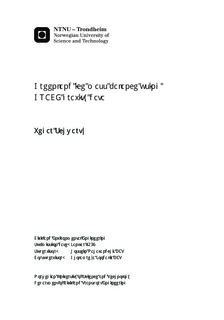Greenland ice mass balance using GRACE gravity data
Master thesis
Permanent lenke
http://hdl.handle.net/11250/232843Utgivelsesdato
2014Metadata
Vis full innførselSamlinger
Sammendrag
The mass balance of Greenland has been assessed with data from the Gravity Recovery and Climate Experiment (GRACE) satellite mission. Monthly data has been used through the time span of the study; January 2003 - December 2012. Level 2 data from three providers has been used. These are the Jet Propulsion Laboratory (JPL) , GeoForschungsZentrum (GFZ) and the Center for Space Research (CSR). The linear trend in this study points to -181±11 Gt/yr, -172±10 Gt/yr and -183±11 Gt/yr for the three data providers respectively. Notable corrections applied to improve the accuracy of this study are gravity leakage correction, adjustment for post-glacial rebound and non-isotropic smoothing filtering.This master thesis also gives an insight some of the mathematical background of physical geodesy and how this can be applied to use GRACE data to track changes in the gravity field. The methodology of applying this theory is explained in-depth with explanations of some natural assumptions along the way. Results are presented from correction calculations, important secular trend graphs and different time series plots of data from the three data providers. These results are compared to the works of other mentionable authors in the field of polar mass redistribution. Lastly, the thesis enlists some noteworthy strengths and weaknesses of the conducted study. To the author's knowledge, this is the first ice mass loss estimation of Greenland using GRACE level 2 Release 05 data decorrelated by non-isotropic filtering.
